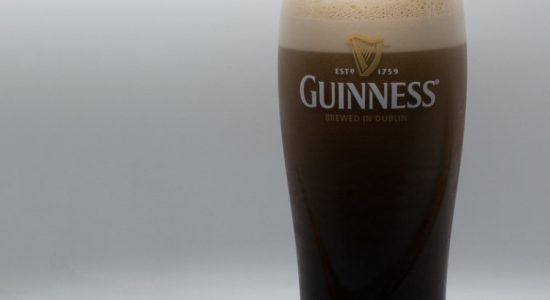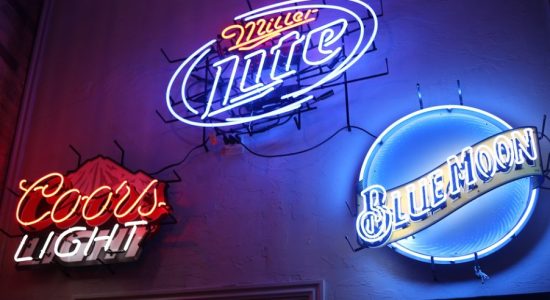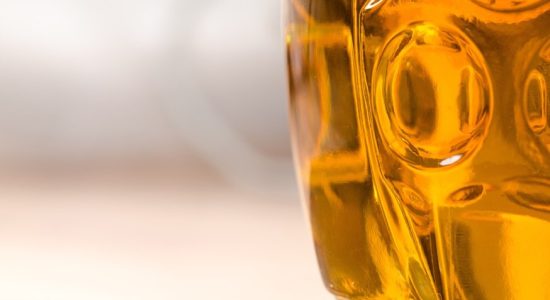What is India Pale Ale? & How is IPA Made?

IPA this, IPA that. How come all beer enthusiasts are so hung up on India Pale Ale? In the world of craft beer and homebrewing IPA is a hit, but what is this beer? and how is it made? I will try to go through everything you need to know about IPA, so you can seem like a beer aficionado with the mates next time you visit the craft beer bar.
What is India Pale Ale? India Pale Ale is a hoppy beer style within the broader category of pale ale. IPA’s usually have a ABV of around 7%. The export style of pale ale and known for its voyages across the sea to India, where it became popular during imperialism.
Sit back and grab a beer and keep reading this post, as i will explain what there is to know about India Pale Ale.
Read Also: What Is The Easiest Type Of Beer To Brew?
What is India Pale Ale?
IPA or India Pale Ale, is a beer renown for its very hoppy taste. The beer used to be shipped to India because it could withstand the long travel because of the amount of hops and alcohol. It has a pale gold to reddish amber color and the ABV usually ranges from 5%-10%.
There is different styles of IPA and the most iconic is the English IPA, though the one people are most familiar with is the American IPA, which is brewed with more hops and has citrusy notes.
Why Is It Called India Pale Ale?
The India Pale Ale was created so that the british could drink beer while colonizing the world. When India was a British colony, it was tough to brew beer there because of the hot temperatures. There was no way to refrigerate, and the heat made the fermentation go wild, changing flavors in often not so good ways.
The regular British beers were difficult to ship since the beer would go bad, become stale or get infected. But two ingredients in beer have preservative effects: Hops. which gives the beer bitterness and alcohol.
Allegedly, a brewer named George Hodgson decided to use the preservative powers of hops and alcohol to create a beer that could withstand the long travel to India.
What does IPA taste like?
I think everyone who has tasted a IPA has their own idea of what a IPA taste like. A lot of people would argue that the beer is very floral and taste of “spring”. However, there’s a measurement in beer that is called IBU: International Bitterness Units.
A regular ale ranges from 5-15 IBU, where IPA usually ranges between 40-60, and all the way up to 120 IBU when we talk about Imperial IPA, or doubles.
The human senses are important when talking about flavors and taste. We use all of our senses to create the experience of food and beer. I’d bet that most of you won’t taste any sweetness, floral, citrusy flavors if you didn’t have your sense of smell. People are different, and some have more developed senses that grants them superhuman taste buds.
My opinion of IPAs is that they are very hoppy, and with hoppy flavors there are also a lot of bitterness. Bitterness can be good, but it can also be overwhelming, especially if you aren’t used to drinking bitter beverage.
With that said, I would also say that IPA is a beer you need to learn to drink – The more you try, the more complexity you explore in the beer, and then its only down the slippery slope where you no longer can be satisfied with the regular IPA. Hate or love the IPA, but the beer is here to stay.
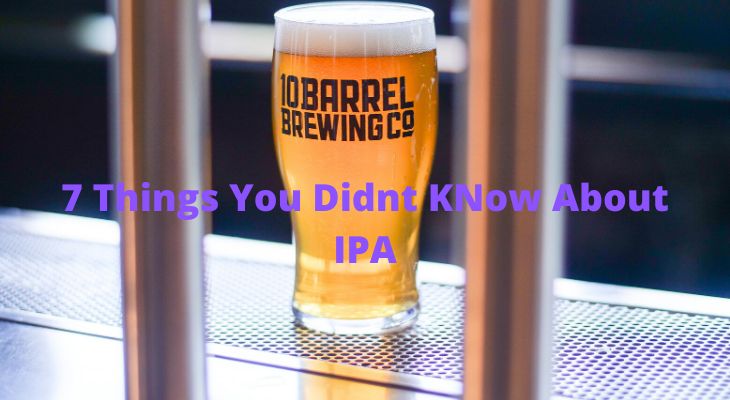
7 Things You Didn’t Know About IPA
The India Pale Ale, or IPA for short, is without any doubt the most popular craft beer style. But as any other popular things, there is a lot of myths that we take as a fact. Here is 7 Things About IPA You Didn’t Know.
IPA Wasn’t Made For The British Troops
It is true that the IPA was very popular in India with the British people, though it was not a beer that was invented for the market or the journey to India. Pale Ales has been in existence since the 17th century. It wasn’t the troops who enjoyed Pale Ales, but the English Upper class and the rest who had chosen to settle in India.
FUN FACT: The British Troops actually preferred porter instead of pale ale.
English IPA’s Were Meant To Be Drunk Ice Cold
If you went down to your local craft beer bar and told the person next to you, that IPA were meant to be drunk ice cold, they would probably escort you out the bar. It is actually true that the traditional English IPA was meant to be drunk as cold as possible. People thought it was more refreshing.
IPA’s Are Very Hard To Make
Even though almost every brewery makes IPA, it can be hard to find great ones. A good IPA is all about balance between hops and malt, and the balance can quickly be thrown out of whack with extremely aggressive hops.
The First Time An IPA Was Actually Called An IPA Was In Australia
While Australia wasn’t the first country to make or produce IPA, they were the first to actually give the beer a name. The name East India Pale Ale first appeared in an ad printed in the Sydney Gazette in the early 1800, but no mention of whoever brewed the beer.
The High Alcohol Level Of IPA Has Nothing To Do With Needing To Survive The Journey From England To India
It is a myth that IPA were created with insane amounts of ABV in order to survive the travels from England. Most beers in the 17th century weren’t that high in alcohol at all. Most beers averaged around 6% ABV, and they made the journey just fine. As you read above, porter were the preferred beer for the English troops.
Different Styles of IPA
There is plenty of different styles of IPA. From the more hop-forward style of American IPA that is a departure from the English IPA style known for being more in balance between malt and hops.
If you want to read more about different types of beer in general you can read it here: How many types of beers are there?
American IPA
American IPAs are often divided into two categories: West Coast and East Coast. West Coast IPA are usually more to the aggressive hoppy side, sometimes powerfully bitter. Expect hop flavors of citrus, pine and florals. East Coast are more balanced with stronger malt matching the hops. Slightly sweet, clean malt. Nevertheless, the hop is still the star in this beer.
Belgian IPA
Believe it or not. Belgian IPA is apparently not really consumed by Belgians. It is still very hop heavy like the American IPA and made with a variety of malts. Where this Belgian IPA stands out from the American is the type of Belgian yeast strains used in bottle conditioning. An excellent mix of traditional belgian brew-style and craft beer. The kid in school who got the best from both parents.
English IPA
The original, the grand dad of the IPA family. The one we all know the legend of. The Pale Ale that was infused with more hops and malt for the journey to India. This beer is nothing like the new American style with its aggressive hops and floral flavors. This one is less intense, with the right balance between flavor and bitterness.
Imperial (Double) IPA
You would think that this beer was made by a crazy scientist whose one and only goal in lift was to create the most hoppy beer. Imperial basically means that the beer is strong, like you also see with Imperial stouts. Even though its hoppy and bitter, there’s still notes of fruit, citrus, pine and floral. A very complex beer for the self claimed hopmeister.
Black IPA
A new style of IPA’s where all the good roastiness and depth from dark ales are mixed with the aggressive hoppyness from IPA. The profile is citrus/fruit, but you might also taste chocolate, coffee, toffee from the roasted malt that has been used during the brewing of this beer. Dark in color and a very complex, but intriguing beer that every homebrewer/beer lover should taste. One of my personal favorites.
Rye IPA
Rye IPA is an IPA with rye added to the malt. This beer has the aggressive, very hoppy notes from the American hops used with some spicy, citrusy flavors. This is a very loud beer with intense and strong flavors. Would recommend for someone familiar with intense beers.
Session IPA
Session IPA is an IPA that has all the complex flavor and hops from the more kick-in-your-face IPAs we all know. The difference here is the amount of alcohol. Session IPA usually ranges from 4,5%-5,4%.
How is IPA made?
Ales has always considered to be the easiest beer to brew among most homebrewers. When brewing ales it’s very easy to make up for any mistakes during the brewing process.
Choose the ingredients with care
When talking about IPA it is all about the hops, so your choice of hops varieties, quantities and timing can make or break your beer. You will need to find a bitter hop and combine it with a more aromatic one. For instance, Citra is a very good hop for IPA.
Tip: While brewing your IPA it is very useful to hop burst (adding additional amounts of hops during the last minutes of your final fermentation) This creates a lot of aromas without risking harsh bitterness.
When choosing your yeast it is very important that you know where your beer is “going”. Do you want a citrusy flavor, then you need to look after some of the american yeast strains. Do you want a more balanced, fuller beer then you should look across the pond towards British strains.
Sugar is of course important in IPAs, because as we all know, they can be packed with alcohol. Use a simple sugar like dextrose, so your beer does not get too sweet – It is a IPA after all.
Remember to write down your process
I had one episode once where i started brewing and everything went well just until i forgot to write down what i’ve had been putting in to my beer. Every homebrewer knows the feeling of complete sadness when you have to throw your beer away because you messed up, so therefore my advice is: Always remember to write down your process!
The only mash you will need for IPA is a single-temperature infusion mash, which is perfect for the well-modified malts to brew IPA. To increase your attenuation, try mashing on the lower end of the temperature.
Boiling the wort does not need to be a complex affair, but as the number of hops increases, so does the risk of adding the wrong amount, and that can turn to failure. Always be careful – Therefore you should always weigh your hops into small bowls and write down how much and what that is in them.
IPA is best served fresh, and won’t benefit from aging. It is therefore alpha omega to make sure that you get your fermentation right. Pitch the beer with a large well-oxygenated population of yeast near the middle of the yeast strains temperature range.
When brewing IPA there is really only one thing you can say, and that is: practice makes perfect. If you feel like trying to brew your own IPA you can read more here: Best Beer Recipe Kit
Most Popular Hops In IPA
When we talk about IPA, we must go through some of the popular hops, since they are essential when making IPA. Without strong hops, there would be no IPA. The one thing that these hops has in common is that they add fruity, citrusy, fresh aromas as usually seen in IPAs.
Amarillo Hops
This American hop is both good for bittering and aromatics. These two things makes this hop very versatile. It is commonly used in all types of IPA from American to Imperials. It adds fresh aromas and flavor of floral, orange and citrus to the beer.
Chinook Hops
This is a very popular hop among craft brewers and was developed in Washington State by the USDA in 1985. It’s a cross between Petham Golding hops and a high alpha male. Delivers both bittering and rich aroma. Extremely spicy and piney flavors, with a hint of grapefruit.
Cascade Hops
This hop origins from Oregon in 1972. Cascade is commonly used in homebrewing, as well as commercial craft brews. Cascade adds a fruity, citrus aroma with a little bit of spice, and will brighten up any IPA and it is very obtainable to get either pellets or as whole.
Citra Hops
Probably the most used hop on this list is the Citra. It is widely used in commercial, craft and homebrews. It is packed with flavors recognizable in many different styles of beer. It gives the beer bitterness and aromatic. Bright orange, grapefruit, lemon and all other tropical flavors creates a totally unique flavor.
Mosaic Hops
A product of Nugget and Simcoe hops. This American Mosaic hop are one of the most in-demand hops on the market. Mosaic has a complex bouquet of earth, pine and fruit aromas from berry to mango. It does not give the usual bitterness, so it is best added with another strong bitter hop.
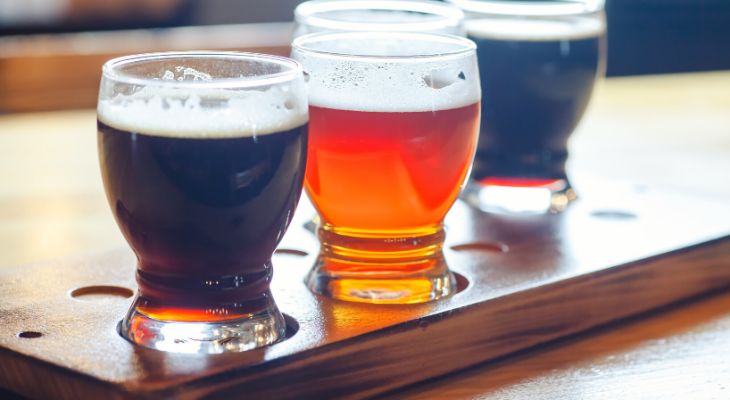
IPA’s I Recommend You To Try
Here’s the IPA’s I would like everyone to try before you take your stance on IPA. From the easy drinking All Day IPA by Founders to the more hardcore hop-flavored lactose infused Careless Island Affair by Mikkeller.
#1 Founders All Day IPA – 4,7% ABV
This IPA from Founders has the taste of a great IPA, but without all the alcohol. It is brewed with a mix of different malts, grains and hops. Great for rewarding a hard days work or life’s small victories.
#2 Ninkasi Total Domination – 6,7% ABV
Citrus and floral aromas is the first thing that comes to mind when writing about this beer. Flavor is hops, but balanced with the richness of the malts used for this IPA.
#3 Mikkellers Careless Island Affair – 8,0% ABV
A lactose infused hard hitter from Mikkeller is our number 3 on this list. Tropical fruits, over ripe fruit, peach and a small hint of lactose hits your nose, while it has a moderate and sweet flavor with little to no bitterness. But be careful. It hits like a truck.
#4 Brooklyn East IPA – 6,9% ABV
A clean IPA that’s packed with aroma of hops, lemongrass, pine and citrus. Plenty flavor of hops, stone fruits and medium bitterness.
#5 Stone Brewing IPA
Clear golden IPA with a bright, almost shiny white head. Lemon, cereal and piney hop aromas and tastes like citrus hops with a light malt balance. One of the beer that got me into drinking IPA. The perfect starter IPA in my opinion.
#6 Mango Mussolini by Fanø Bryghus
A local beer from Fanø with notes of tropical fruit, freshly squeezed orange juice and cut grass. With a complex mixture of hops that gives this beer a bittersweet taste of citrus and mango. If you are more into the fruit IPA, this is definitely worth a try!



